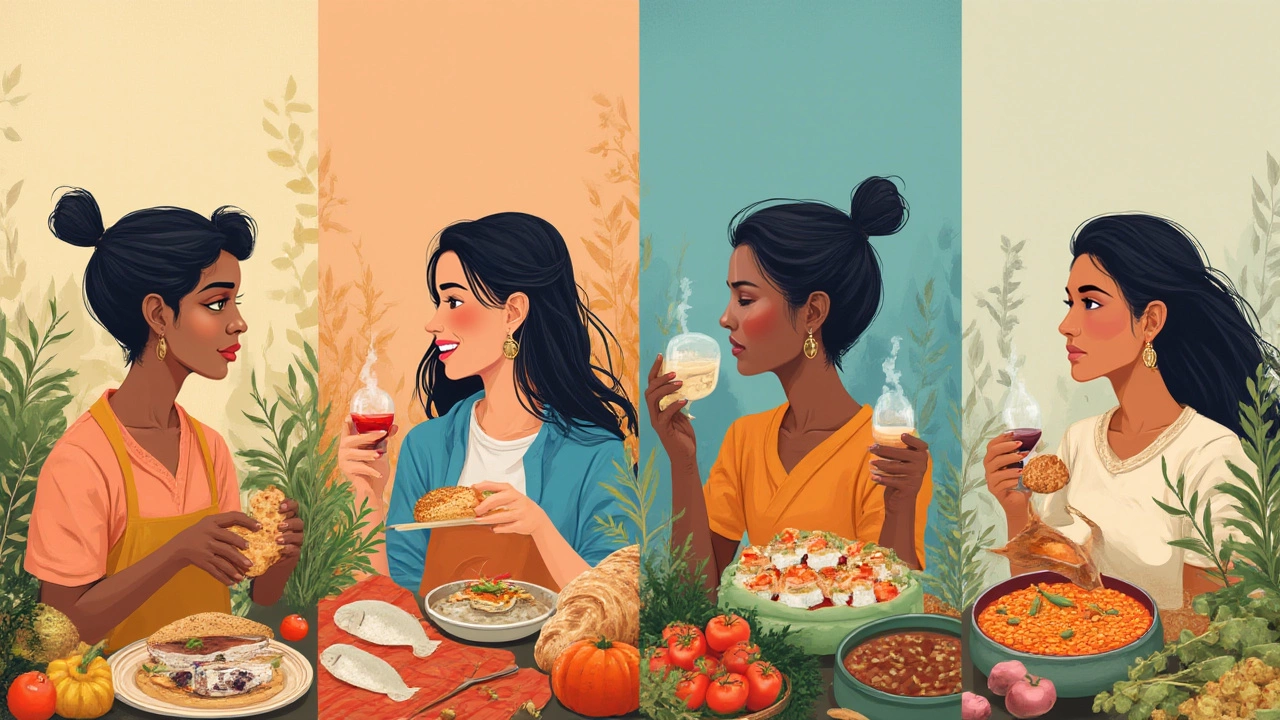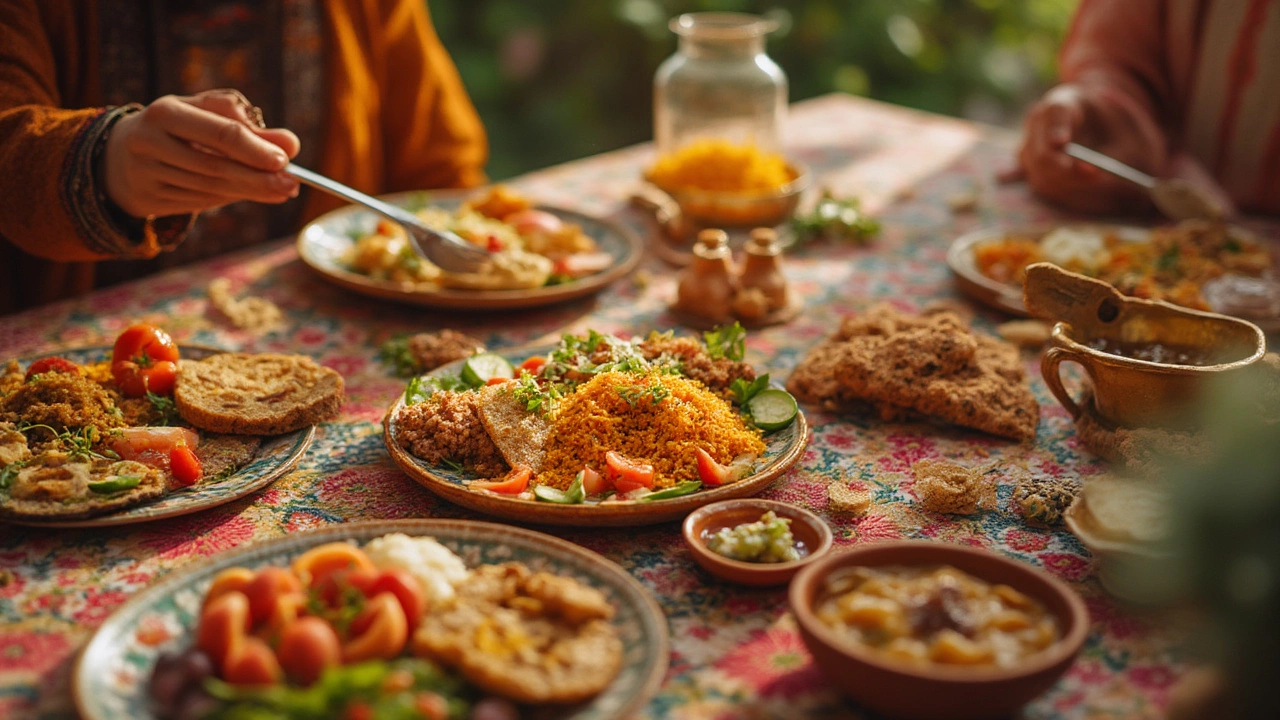If food could vote, what country would it crown as the world’s healthiest eater? That debate sparks up in kitchens and cafes across the globe. Some swear by the colorful Mediterranean plates, others praise the minimalist elegance of Japanese meals, and don’t even get started on the fans of Nordic simplicity or Indian spices. But is there a real winner, or do the world’s healthiest diets borrow from each other more than we think? I say, let’s look at the plate, not the passport.
How Do We Judge a 'Healthy' National Diet?
Deciding which nationality eats healthiest is trickier than scoring a cricket match. What makes a diet “healthy”? The World Health Organization boils healthy eating down to a few clear basics: lots of fruit and veggies, whole grains, minimal processed sugars, not too much salt, moderated animal fats, and a reasonable amount of lean protein. But real meals get tangled in culture, tradition, geography, even family secrets. Some cuisines shine in certain ways and drop the ball in others. So, experts look at a few pointers to make their picks:
- Nutrient density: Does the food pack good vitamins, minerals, antioxidants per bite?
- Balance: Protein, healthy fats, fiber, enough but not too much carbs.
- Portion control: Do people eat till full, or stuff themselves sick?
- Meal rhythm: How many meals a day, what time do people eat, and do they eat communally or solo?
- Long-term outcomes: Countries with fewer heart attacks, diabetes, or obesity tend to get gold stars.
Let’s put some numbers to it. According to the Global Burden of Disease Study 2023, diets packed with too much sodium, trans fats, and sugar-sweetened drinks cause a whopping 11 million deaths every year worldwide. That makes eating well about more than waist size; it’s life or death.
| Country/Region | Obesity Rate (%) | Average Daily Veg/Fruit Intake (g) | Average Life Expectancy (years) |
|---|---|---|---|
| Japan | 4.3 | 350 | 84.6 |
| Italy | 19.9 | 400 | 83.2 |
| India | 3.9 | 220 | 70.8 |
| United States | 36.2 | 150 | 76.1 |
| Sweden | 20.6 | 350 | 83.1 |
Curious, right? Japan eats the most veggies, has the least obese folks, and also leads in life expectancy. Italy, too, stays in the high leagues, while U.S. numbers show that having everything doesn’t mean eating best. These statistics offer a bite-sized clue, but what’s behind these numbers?
Putting It on the Plate: Standout Healthy Cuisines
First up, Mediterranean food. Imagine a table laid out in Greece or southern Italy: olive oil gleaming on breads, piles of tomatoes, cucumbers, beans, and grilled fish, just the right splash of red wine, and good bread—not the fluffy, white tasteless kind. The Mediterranean diet is probably the most-researched healthy eating style. A 2023 Lancet study even said if everyone on earth ate like the Med, heart disease rates could drop by 20%.
What’s its secret? Simplicity. Unprocessed foods, extra virgin olive oil for fat, nuts for crunch, fish over red meat, and lots of fiber. Meals happen with people, not screens. And sugar? For them, that's a treat, not a staple.
Now jump to Japan. Smaller plates, gently cooked fish, heaps of veggies, seaweed snacks, miso soup, and white rice—no mountain-sized serving like in the West. They use few spices and oils, but gorge on umami flavors (think fermented soy, bonito flakes, mushrooms). The Japanese eat until lightly full, never stuffed—and this practice, called "hara hachi bu," really works. Eating habits there help produce the most centenarians per capita. The catch: Japanese food is lower in fat, but sodium-heavy due to soy sauce and pickles, which needs watching if you have hypertension.
Nordic countries—Sweden, Denmark, Norway—go big on root veggies, whole grains like rye, cold-water fish, wild berries, and fresh dairy. The "New Nordic Diet" stuck to local, seasonal foods, simple prep, and minimal refined carbs. Health stats for these regions? Not as super as Japan, but heart disease is much less than in the U.S. Veggies and grains cost less, so even low-income folks eat healthy.
How about India? Plant power all the way. With so many vegetarians, plates burst with lentils, beans, fresh fruit, and spicy curries. Turmeric and cardamom aren’t just for taste; studies by AIIMS New Delhi found regular turmeric boosts antioxidants in your blood. Homemade food trumps takeout, though the recent fast-food wave is changing things. What pulls us back is high ghee, fried snacks, and sugar tea, but on a festival day, calories really don’t count, do they?
Then there’s France—a country obsessed with butter and cheese, yet the Parisian health paradox baffles researchers. Is it the small portions? The long mealtimes? The red wine? Nobody knows exactly, but it’s clearly not just about fat grams or calories—it’s about balance and lifestyle.

What Wrecks a Nation’s Diet?
Not all countries have it figured out. The United States—land of plenty, leader in processed food. A 2022 CDC report showed 63% of calories in a typical American day come from ultra-processed food. That stacks up: high sugar, trans fats, very little fiber, portions as big as your head. It’s not just about the food—time crunches, stress eating, eating solo, and constant snacking all make things worse.
Emerging economies like China and Brazil used to ace healthy eating. But as incomes rise, so does the “Western” diet—think burgers, fries, soda, packaged junk. India’s rates of obesity and diabetes are up for the same reason. Urban families walk less, order more online, and copy Western fast-food habits. The latest Indian National Family Health Survey paints a worrying picture: obesity doubled in Indian adults since 2010, much of it in the cities.
Here’s another cultural curveball: tradition saves you, until it doesn’t. Southern U.S. food features leafy greens and beans, but also deep-fried everything and sweet tea poured with sugar. Some Mediterranean areas now eat tons of processed pork, not fresh vegetables. Nostalgia for grandma’s kitchen only works if grandma ate well herself!
Even the healthiest nationalities have traps. Japan’s sodium-heavy pickled foods can push blood pressure up. Mediterranean rural areas face food deserts—hard to believe, but true. Nordic diets are healthy, but cold-weather months can mean more cured meats and less access to greens. No country’s cuisine is perfect every day of the week.
Smart Eating Habits to Steal from Around the World
So what tricks can you borrow from the world’s winners? A few stand out:
- Eat together. Mediterranean cultures keep meals slow and social. Japanese values say don’t talk while chewing, but both agree: meals = togetherness, and that leads to less bingeing.
- Bulk up on plants. Most healthy diets revolve around veggies, legumes, and some fruit. Skipping out on these isn’t an option in Japan, Greece, or India.
- Use good fats. The Mediterranean crew loves olive oil and nuts. The Nordic diet hides omega-3s in salmon and mackerel. Drop those palm oils and artificial spreads.
- Mind portions. Japanese practice ‘hara hachi bu’—eat till 80% full, not stuffed. Use smaller plates. Stop guilt-tripping about wasting food; better to pack leftovers.
- Limit processed food. The easiest way to wreck a healthy diet is to start eating stuff made by machines, not people. All the healthiest nations mostly eat real, home-cooked food.
- Spices, not salt. Indian cuisine packs flavor with turmeric, cumin, ginger. Japanese use miso paste and seaweed. Cut down on salt and processed sauces; spice things up instead.
If you want to add science to your daily meals, there’s real evidence too. The 2024 EAT-Lancet publication rolled out, urging a "planetary health" diet: 50% of every meal should be fruits and veggies, 25% whole grains, 25% legumes, nuts, and modest animal protein. Studies there showed that switching to this style drops your risk for heart disease by nearly half (47%) in ten years. Pretty convincing stuff!

The Takeaway: Can You Eat Like the World’s Healthiest?
So, what’s the verdict? If you measured only by life expectancy and disease rates, Japan and Mediterranean countries (especially Greece, Italy, southern France) score famously high. But they don’t get there by magic. They follow a bunch of habits any of us can steal. Indian food culture—if you remove the daily chai samosa—can also be super healthy, especially because it pushes plant-based proteins and home-cooking. Nordic folks keep things simple, local, and fresh. Each cuisine delivers good-for-you things in its own taste and style.
If you want a quick cheat sheet, here you go:
- Fill half your plate with colorful veggies or fruit, every meal.
- Eat fish, beans, or lentils at least 2-3 times a week.
- Use olive oil or canola instead of butter or margarine for cooking.
- Have one day a week with zero processed food or sugar—just real home-cooked meals.
- Put your phone away and eat slow, like you’re in a Greek taverna, even if you’re at home.
No government or food company is going to save your health for you. It’s about swapping out the worst parts of your country’s cuisine for the best ideas from somewhere else. Travel with your taste buds. And if you find yourself eating with your hands, sharing a plate, and savoring flavors you can name—not just “crunchy” or “sweet”—chances are, you’re heading in the right direction.
